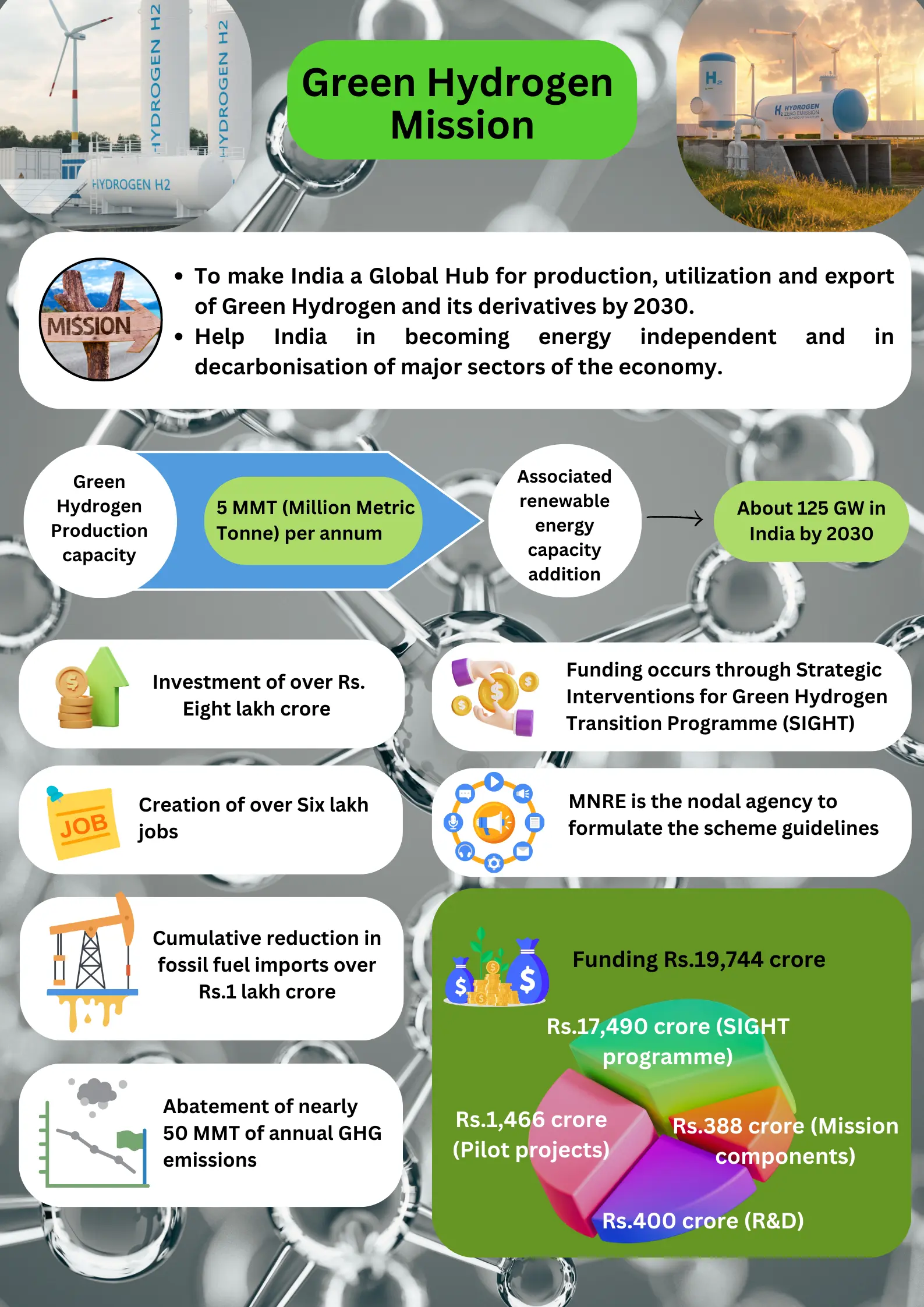July 11 , 2024
Government rolls out 200 Crore Budget for Hydrogen Testing Facilities
The National Institute of Solar Energy (NISE)
will issue
Calls for Proposals (CfP) through a transparent
process to
set up the hydrogen testing infrastructure with a budget
allocation of ₹200 crore until FY26.
The National Green Hydrogen Mission, launched
in
January 2023 with a ₹19,744
crore outlay
till FY30, aims for India's clean energy
leadership.
The Ministry of New & Renewable Energy (MNRE)
has released
guidelines for funding testing facilities, infrastructure,
and institutional support as part of the National Green
Hydrogen Mission. The scheme, with a total budgetary outlay
of ₹200 crore until FY26, aims to support the
development of
standards and regulatory frameworks for the green hydrogen
sector.
Key Objectives and Implementation
The National Institute of Solar Energy (NISE) will oversee the scheme's implementation as the Scheme Implementation Agency(SIA). With a budget allocation of ₹200 crore until FY26, the scheme aims to develop robust quality testing facilities to ensure the safe and secure production and trade of Green Hydrogen.
Scheme Highlights
The scheme will identify gaps in existing testing facilities for components, technologies, and processes within the Green Hydrogen value chain. It aims to support the creation of new testing facilities and the upgradation of existing ones to ensure safe operations. Emphasizing quality, sustainability, and safety in Green Hydrogen (GH2) production and trade, the scheme will develop robust testing facilities. The National Institute of Solar Energy (NISE) will issue Calls for Proposals (CfP) through a transparent process to establish the necessary testing infrastructure. The Ministry of New & Renewable Energy (MNRE) will issue administrative sanctions based on recommendations from the Project Appraisal Committee (PAC). Additionally, NISE will monitor projects, facilitate knowledge sharing through reports, workshops, and publications, and disseminate findings and best practices.
Financial Support
The scheme will fund the capital expenditures necessary for establishing new testing infrastructure and upgrading existing facilities. Financial support will be evaluated and granted on a case-by-case basis, considering the specific requirements and merits of each proposal.
Potential zones and Studies:
The National Green Hydrogen Mission, launched in January 2023 with a ₹19,744 crore outlay till FY30, aims for India's clean energy leadership. Funding Testing Facilities under the National Green Hydrogen Mission will bolster India's green hydrogen sector by ensuring robust quality, safety, and sustainability standards. (Ministry of New and Renewable Energy)
National Green Hydrogen Mission
Goals:
• Contribute to India’s self-reliance (Aatma Nirbhar) through clean energy
• Inspire the global clean energy transition
• Achieve significant decarbonization
• Reduce dependence on fossil fuel imports
• Enable India to assume technology and market leadership in Green Hydrogen.
By leveraging existing resources and infrastructure with various agencies, the scheme aims to ensure the safe and secure operation of equipment and instruments used in the Green Hydrogen value chain. This initiative is a significant step towards India’s commitment to clean energy and sustainability.

(Data: PressInformation Bureau (pib.gov.in) )
The Green Hydrogen Mission aims to position India as a global leader in the production, utilization, and export of green hydrogen and its derivatives by 2030. This ambitious mission is integral to India's efforts to become energy independent and achieve significant decarbonization across major sectors of the economy. It sets forth several ambitious targets, including establishing a green hydrogen production capacity of 5 million metric tonnes (MMT) per annum and adding approximately 125 GW of associated renewable energy capacity by 2030.
The initiative aims to attract investments exceeding ₹8 lakh crore and generate over 6 lakh jobs, providing significant employment opportunities and boosting economic growth.
Environmentally, the mission seeks to cut fossil fuel imports by over ₹1 lakh crore and abate nearly 50 MMT of annual greenhouse gas emissions, contributing significantly to global climate goals.
The Green Hydrogen Mission is supported by substantial financial backing and a well-structured implementation strategy, with a total funding outlay of ₹19,744 crore. This allocation includes ₹17,490 crore for the Strategic Interventions for Green Hydrogen Transition Programme (SIGHT), ₹1,466 crore for pilot projects, ₹388 crore for mission components, and ₹400 crore for research and development (R&D). This comprehensive funding framework is designed to ensure the successful execution and sustainability of the mission, driving India's leadership in the green hydrogen sector.
The Ministry of New & Renewable Energy (MNRE) is the central agency responsible for formulating the guidelines and overseeing the implementation of the mission.
By achieving these targets, India aims to set an example on the global stage, inspiring other nations to transition to clean energy and making significant strides towards environmental sustainability and technological leadership. Through robust funding, strategic planning, and a clear vision, the Green Hydrogen Mission is poised to transform India's energy landscape, making it a hub for green hydrogen and paving the way for a sustainable future.

